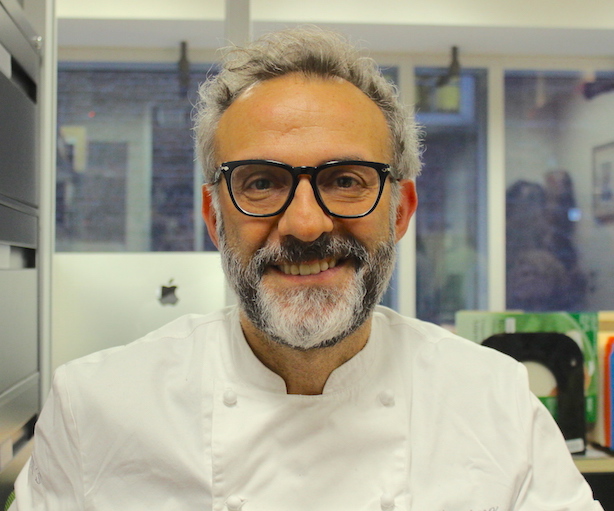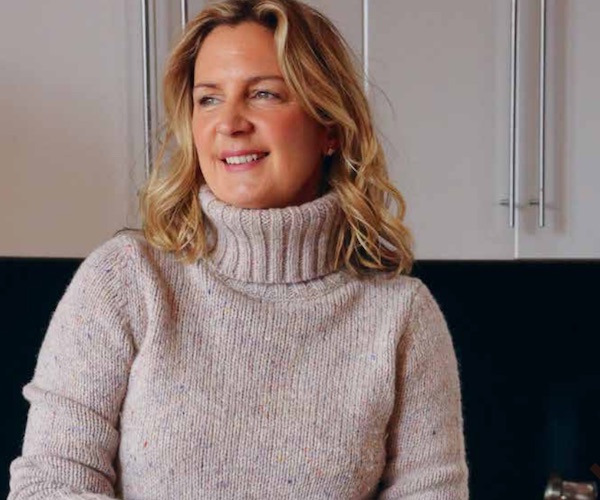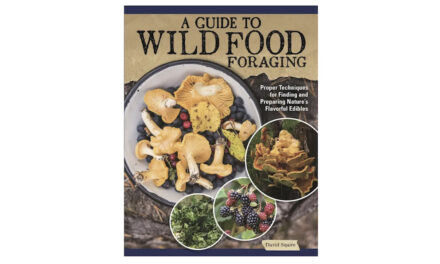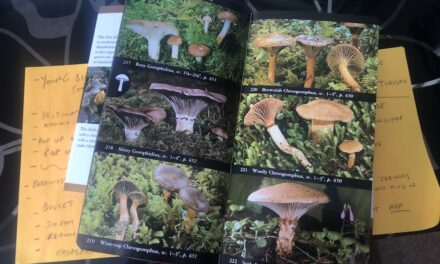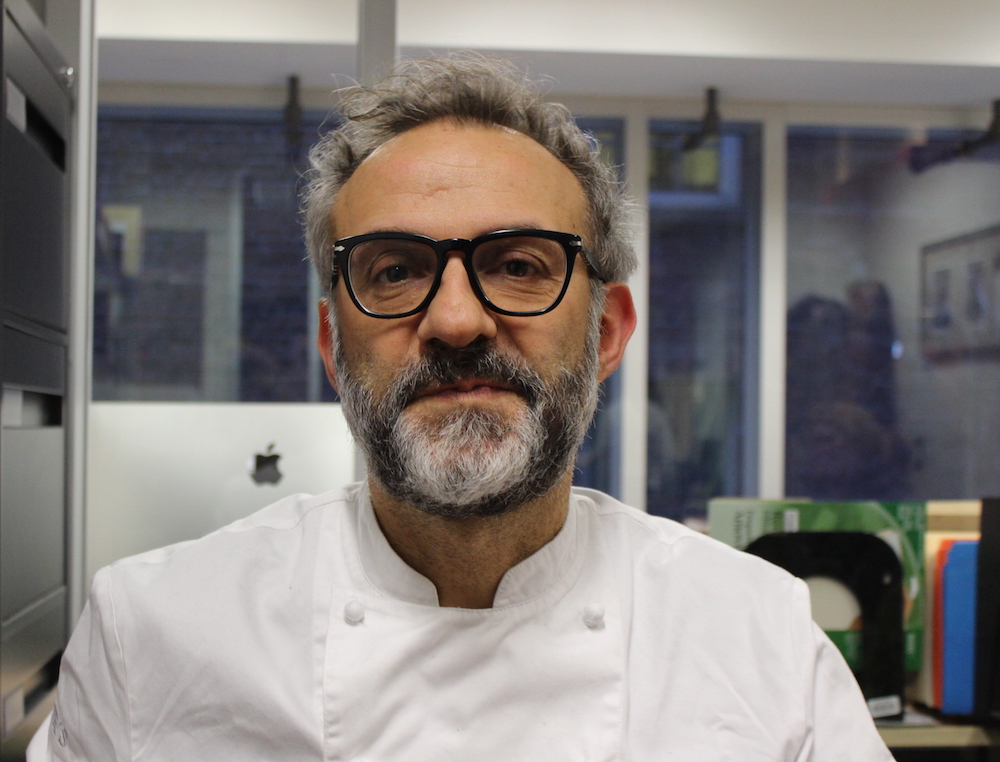
The most famous chef in Italy’s father had another idea for his fourth son: be lawyer. Massimo Bottura tried that path, but it didn’t work out. And after he told his father he was giving up the study of law to be a chef they didn’t speak for two years. Once they reconciled and Bottura was running a trattoria outside of Modena of some note, he swore he would one day get three Michelin stars. And Bottura did it – just – within a month of his father’s death at his second, and now world famous, and top rated restaurant, Osteria Francescana.
 Last fall, Bottura published Never Trust a Skinny Italian Chef, a sort of cookbook that tells the stories behind 20 years of creativity at Osteria Francescana, expressed in dishes like ‘Oops, I Dropped the Lemon Tart’ or ‘Memories of a Mortadella Sandwich’. Bottura says it was his editors that made him include actual recipes in the book, they’re at the back of it and its the stories behind each dish that have made it an international hit and a must have on the shelf of aspiring chef’s kitchens across the Western world. But what else would you expect from a man who lives by the motto “always leave room in your life for poetry”, and is renown patron and celebrant of the arts: visual and musical.
Last fall, Bottura published Never Trust a Skinny Italian Chef, a sort of cookbook that tells the stories behind 20 years of creativity at Osteria Francescana, expressed in dishes like ‘Oops, I Dropped the Lemon Tart’ or ‘Memories of a Mortadella Sandwich’. Bottura says it was his editors that made him include actual recipes in the book, they’re at the back of it and its the stories behind each dish that have made it an international hit and a must have on the shelf of aspiring chef’s kitchens across the Western world. But what else would you expect from a man who lives by the motto “always leave room in your life for poetry”, and is renown patron and celebrant of the arts: visual and musical.
Massimo Bottura is in Toronto this week on the invitation of George Brown’s Centre for Hospitality and Culinary Arts. Chef School Director John Higgins and company are keeping him busy with days full of demonstrations, talks and tastings. I spoke to the chef at the college following a Q&A event moderated by Rita Demontis. Though many of these events are ticketed (including a dinner tonight at Rob Gentile’s Buca Yorkville hosted by the Italian Consulate), the focus has been on George Brown’s culinary students. The school has an Italian program in partnership with the International School of Italian Cuisine in Alma, in Emilia-Romagna not far from Modena. Bottura’s own education includes working for Alain Ducasse and Ferran Adria. The former insisted Bottura come cook for him in Monte Carlo when he happened on the young Italian’s first restaurant, Trattoria del Campazzo, while on the hunt for Balsamic vinegar. Of Ducasse, Bottura says, “he taught me obsession”; of Adria he says, “he taught me freedom”. At El Bulli, Bottura met and became good friends with Rene Redzepi, and is very much, both in rank and spirit, part of that gang of World’s Best Restaurants / Cook It Raw / Mad Food Symposium gang. But, Bottura give the most credit to a French chef who cooked in Piacenzo, Georges Cogny, who taught him classical technique, and also Lidia Cristoni, a near blind woman who showed up at his door when he opened his first restaurant and has been hand making all of Bottura’s pastas ever since. Cristoni, Bottura explains, “taught me more than to cook, she taught me how to eat.”
The Interview
Good Food Revolution: In your book you use the phrase and concept “Tradition in Evolution”. What does this mean?
Massimo Bottura: Tradition in Evolution: these seem like two words that are opposite. But if you look at your past in a critical way, not in a nostalgic way, you can bring the best from your past into the future. So, that means traditions are somethings you have to question. You have to ask yourself, did they respect the ingredients? Most of the time the answer is no, because in the past they didn’t have the right tools, or money in their pockets. That means that if you have this kind of approach, you can ask questions to evolve the tradition. Traditions do not have to be put in museums, with no touching, because they get dusty. But if you are a chef and everyday you go in the museum and dust the tradition, it’s a spiritual exercise. You ask yourself questions, and you get different answers, because you are a contemporary man and you keep evolving so every day you are a better man, if you are evolving the right way.
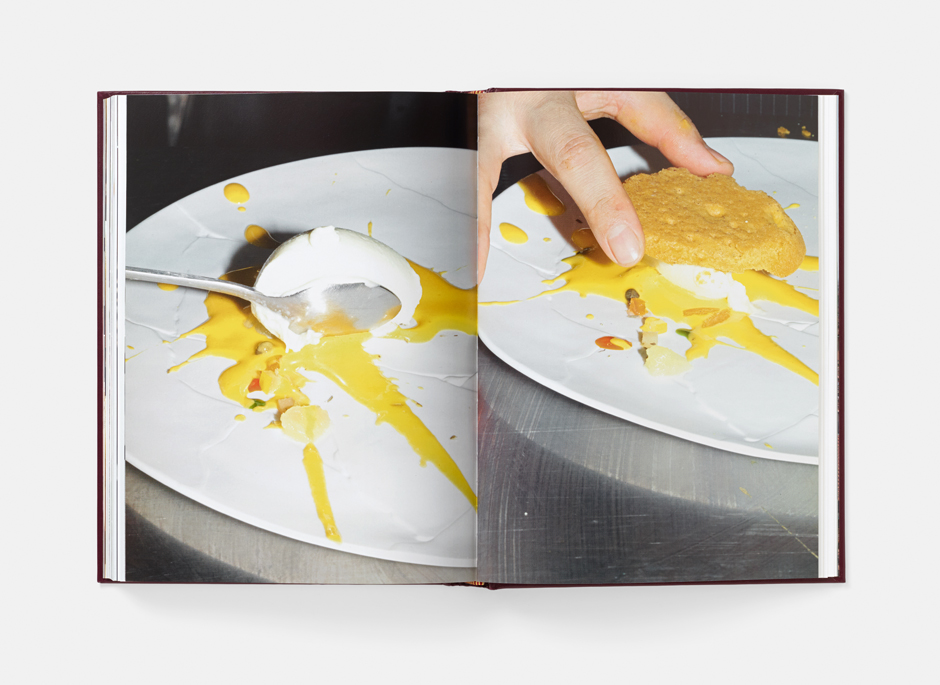
GFR: But you have to know the tradition…
MB: Of course! [Bottura gives a look of irritation, or at least jet-lagged exasperation, to his interviewer.] It’s like if you ask me if I use the right ingredients. I am a three star Michelin chef at one of the best restaurants in the world six yeas in a row. Are we still talking about the quality of the ingredients? No. It’s not just about that. Not just the quality of the ingredients, but it’s the quality of the ideas that make the difference.
GFR: When you create something like ‘Memories of a Mortadella Sandwich’, is that a natural process? Think it might be courageous – you are exposing yourself and your very personal history.
MB: True. OK, that’s a good question because it’s something that you feel inside and this is something that I created for my mum. She was supporting me all the time – since I decided to become a chef. She was fighting for me. And for my first 14 years I was going to school with a Mortadella sandwich. So I remember, and I recreate.
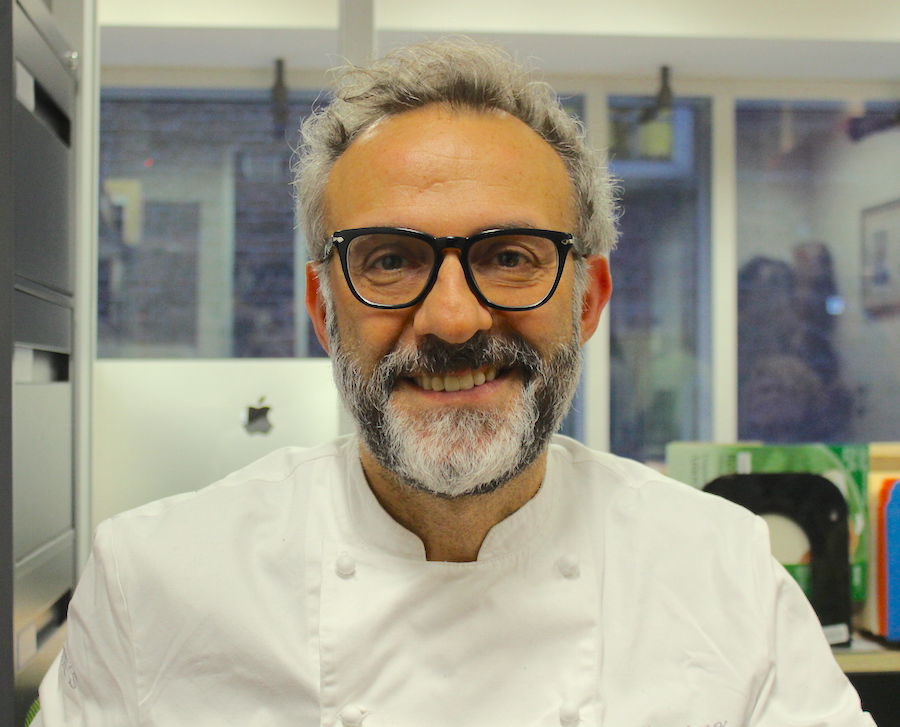
GFR: OK, so it has to be good, right? You have to honour that.
MB: It has to be better than a Mortadella sandwich. This is very difficult for an Italian chef because it’s not about the tradition, it’s about the flavours. We have incredible ingredients, so what you have to do as chef is you have to go and work with respect to use technique to sublimate the ingredients; not to sublimate the ego of the chef. This is a very important point. I can’t make prosciutto into a foam, but as a cooked meat, Mortadella, I can make as a foam and I can keep the flavour there. The flavour is there.
GFR: Why are you here today in this chair [at the George Brown College School of Hospitality and Culinary Arts]?
MB: Because I believe in teaching. I believe in transferring something to the young generation. I believe in ethics. At one point in your life, in which you have everything, it’s time to go back; give back something you received.
More Bottura at GFR: Click here for Jamie’s video interview and photo gallery of chef Massimo Bottura and his food at Osteria Francesana in Modena in 2012.
 Malcolm Jolley is a founding editor of Good Food Revolution and Executive Director of Good Food Media, the company that publishes it. Follow him on Twitter or Facebook.
Malcolm Jolley is a founding editor of Good Food Revolution and Executive Director of Good Food Media, the company that publishes it. Follow him on Twitter or Facebook.

